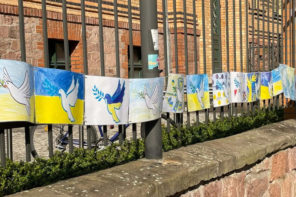On May 2nd, 49 men went on trial for the public murder of a young woman called Farkhunda in the heart of Kabul. Both the lynching and the public and official response it has evoked have emerged as critical tests of how far and along which road Afghanistan has traveled since 2001. On March 19th, Farkhunda, who was in her 20’s, was beaten to death by a mob after she was accused of burning the Quran. Her body was crushed by a car and set alight, while the police stood by. Just a few days prior to this, Kabul had celebrated March 8th as International Women’s Day, with a huge number of events sponsored by the large number of agencies working for Afghan women, and on democratic rights.
One of the most persistent reasons given to justify the US-led coalition’s invasion of Afghanistan in 2001 was to restore the rights of Afghan women. It was the reason that made the overthrow of the Taliban a just cause, what made Afghanistan the just war.
Afghan women have known for a while now that there have been few such gains. Farkhunda’s death, and the manner of her killing, have now revealed this to the world.
The Taliban rule was marked by public executions that the regime carried out to bring home their authority. Large crowds would gather in Ghazi stadium to watch men and women being punished or put to death. Footage of a woman’s execution in 1999 had been smuggled out of the country, which had caused rightful outrage. These were among the catalysts that had given the sheen of morality to the US led overthrow of the Taliban. I had once asked an Afghan friend why so many had routinely turned up to these gruesome events. Because there was nothing else to do then, he had said.
The events around Farkhunda’s killing were very different, but in some ways resembled the Taliban-era executions. Farkhunda was murdered close to the Shah-e-do-Shamshera mosque, a baroque-style building painted in lemon yellow that is closeted by traffic, noise and a busy market. It is located by the river, a brisk walk from the Presidential Palace as well as the old city. It is the closest thing Kabul has to a public square, which is why the murder was witnessed by so many. Early accounts reported the woman as being mentally ill. But later it transpired that she was a religious studies student, she even taught Quran to children. That while she may have been depressed, her family had been pressured to describe her as mentally disturbed by the police, seeking to justify their inaction. Ironically, Farkhunda appears to have been killed since she was arguing for a more orthodox form of Islam, and got into an altercation with one of the mullahs who was selling taveez or charms, near the shrine. Such practices are common across Afghanistan, and the Indian subcontinent, but are held as unIslamic by many Muslims.
What exactly happened that afternoon is contested, will be variously told and retold. The fact remains that a young woman was murdered in a public space in Kabul, by a mob of urban men, many of them young. She was killed in alleged defense of Islam, while others stood by and filmed the event on their phones. For all the talk of Afghan culture being patriarchal and anti-woman, I cannot conceive of such an event occurring in the Kabul of even a few years ago. The fact that the killing occurred now, fourteen years after the ‘liberation’ of Afghanistan, is the mark of a society in deep and critical flux.
Farkhunda’s brutal death reflects the flawed modernity of new Kabul, the unfolding of processes that have failed to address deep rooted traumas for a generation raised in war, that have created inequality and urban spaces that are deeply dangerous not only for young women, but for dissent of many kinds.

Hearteningly, the murder has sparked deep outrage in the city, and Kabul has seen unusual scenes of protest and grief. The police have reacted by arresting 18 accused, and suspended 13 police officers. Yet these measures have not stemmed the outpourings of protest and grief. At the funeral on March 22nd, in a powerful gesture, women carried Farkhunda’s coffin on their shoulders. Hundreds have made Farkhunda’s story their own, sharing their grief on social media and mourning her. Over the next few days protestors marched in front of the mosque, many wearing masks of her bloodied face, and gathered outside the Supreme Court to demand justice for Farkhunda.
For all their famed resilience, this is a turning point for Afghan women, and Afghan men. There are echoes in this incident of another young woman killed in Kabul, called Naheed, in the summer of 1992. The city was then in the thick of infighting among different factions of mujahideen, the ‘holy warriors’ who had battled the government and Soviet forces before turning on each other. In the popular version of the story, Naheed, then aged around 13, was chased and cornered by a group of soldiers in her neigbourhood. To escape, she jumped from her family’s sixth floor apartment and was killed. Naheed became an icon for that generation of Kabulis, representing all the horrors and violence against women that unfolded during the civil war. When the Taliban took Kabul in 1996, the brief celebrations that accompanied them must have been motivated by memories of girls like Naheed.

Memorial ceremony at U.S. Embassy Kabul in memory of Ms. Farkhunda in Kabul, March 26, 2015. Photo: U.S. State Department.
Farkhunda is a symbol of a different kind of darkness, created during an era of democracy and freedom. What is critical now is to see where the relief from these inequities will be perceived to emerge—from the institutions of government, in civil society movements, aid programmes or elsewhere.
A version of this article first appeared on Scroll.in on March 24th 2015.








